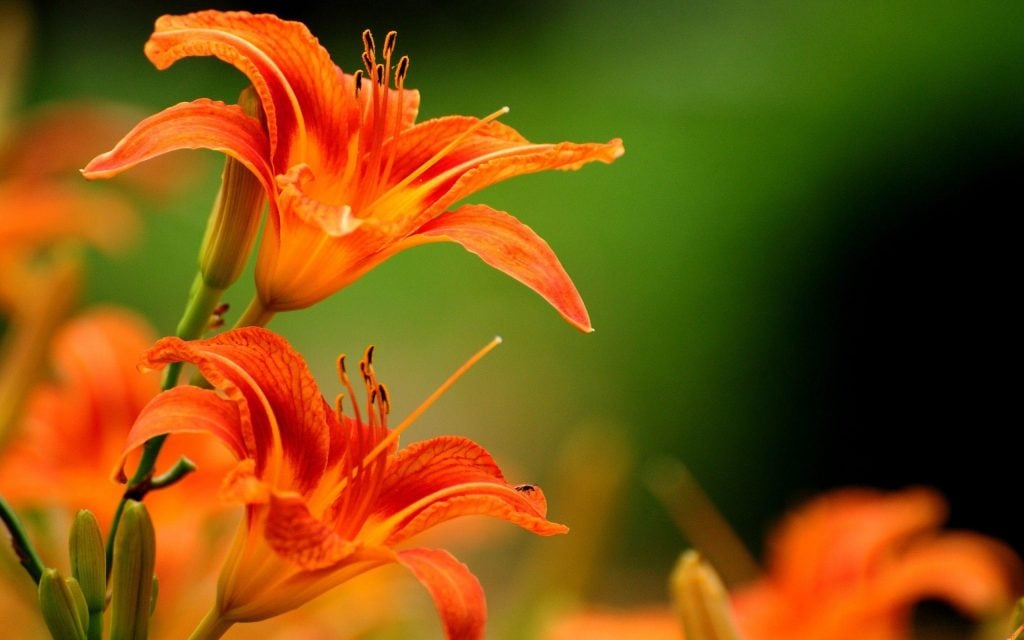Table of Contents
Daylilies are a group of flowering perennial plants belonging to the genus Hemerocallis. It gets its name from the Greek words Hemera, meaning day, and callus meaning beauty. These are easy to care for and are resistant to several pests and diseases, and can survive in extreme conditions like drought, less exposure to sunlight and less fertile soil.
These flowers come in several colours, such as orange, pink, purple, red, white, yellow, etc., and their name is apt because they survive only for a day. They can grow up to four feet high and produce several flowers which bloom over a period of time.
Now if you want to know how to take care of these plants, especially how to deadhead daylilies and prune them, keep reading!
Let Us Learn How to Deadhead and Prune Daylilies
1. When to Prune and Deadhead Daylilies
Deadheading only involves removing the flowers along with/without their stalk, but pruning involves removing bigger parts of the plants as well, such as branches, stems, leaves, etc. Pruning may also be used to give shape to the plant, unlike deadheading which only improves the qualities related to flowering.
Since these flowers bloom once a day for about a month or a little bit more and dead flowers fall on their own. But if they remain on the plant, you can remove them. You can prune them about once a year during the fall or spring.
2. Why Should You Deadhead Daylilies
Although it may not be necessary, wilted/ spent flowers are not aesthetically pleasing to the eye, and they might droop over underdeveloped looms and restrict and prevent their growth also.
Another drawback is that if you don’t deadhead daylilies, they develop into seed pods and might develop into seed pods, and this might result in reduced flowering next season.
3. How to Deadhead Daylilies
By deadheading flowers, you can ensure that the plant’s nutrients are transferred to the flowering and not to seed production. It is better to remove the entire stalk of daylilies rather than letting it be because then there is a chance that they can develop seeds and will take in a lot of nutrients.
You can use either a pair of shears or just put your thumb and forefinger just below the spent flower base and remove it. These can be added to the compost so that they can become fertilisers in the future!
Suppose there are two blooms in a stalk. You can use your shears to cut down the entire stem. You can keep the flowers in a vase, although they might not last for longer periods.
Note: Remember not to cut fresh daylilies and wait to remove the older ones. Because if you keep removing fresher ones, it will end up damaging the plant. The older ones can be identified as they look like they are about to fall, but the ovaries are still attached to the flowers. This is why it is necessary to deadhead flowers, as they can develop into seeds later.
4. In Spring/Winter/Fall or Summer
You don’t have to trim the plant throughout the year, but during the blooming season, you can deadhead regularly. Just before this period, you can cut down on greenery. Then the plant’s conditions will be ideal for new growth. This will also promote air circulation and allow it to grow back stronger.
Pruning will not increase the number of blooms, but rather it will ensure that the plant grows healthy. Now that you know how to deadhead daylilies, let’s start growing them better!
Different Types of Daylilies
Around 35,000 varieties of daylilies exist, and this is such a huge number because it also includes artificially created varieties! There are different varieties based on colour, shape, size, which season it might grow well, water requirements, soil needs, etc. And what’s more interesting is that new varieties are still being introduced every year, and this stands as evidence of why daylilies are such a beloved variety of flowering plants.
Some common daylilies with interesting names are:
1. Stella D-Oro
It is one of the most common ones that are planted, and these plants have bright yellow-coloured flowers.
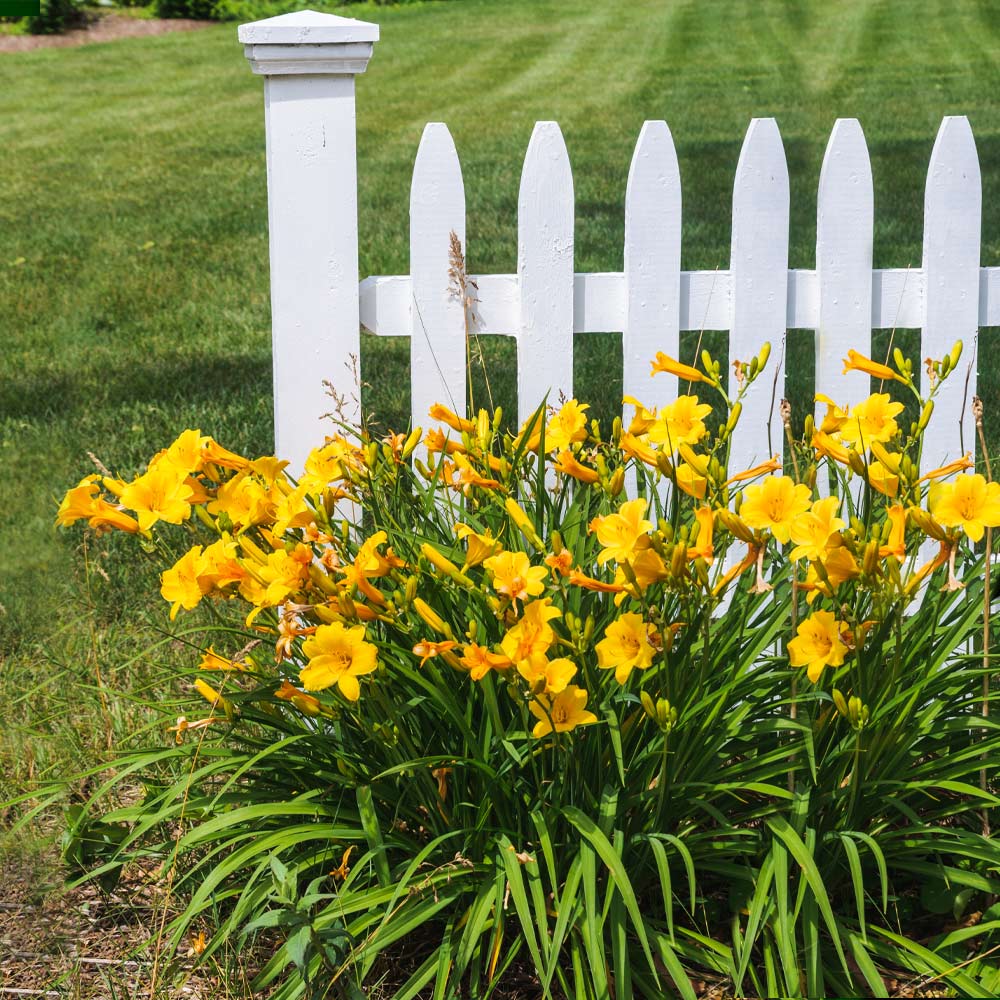
2. Eenie Weenie
It is also yellow but has slight differences in appearance.
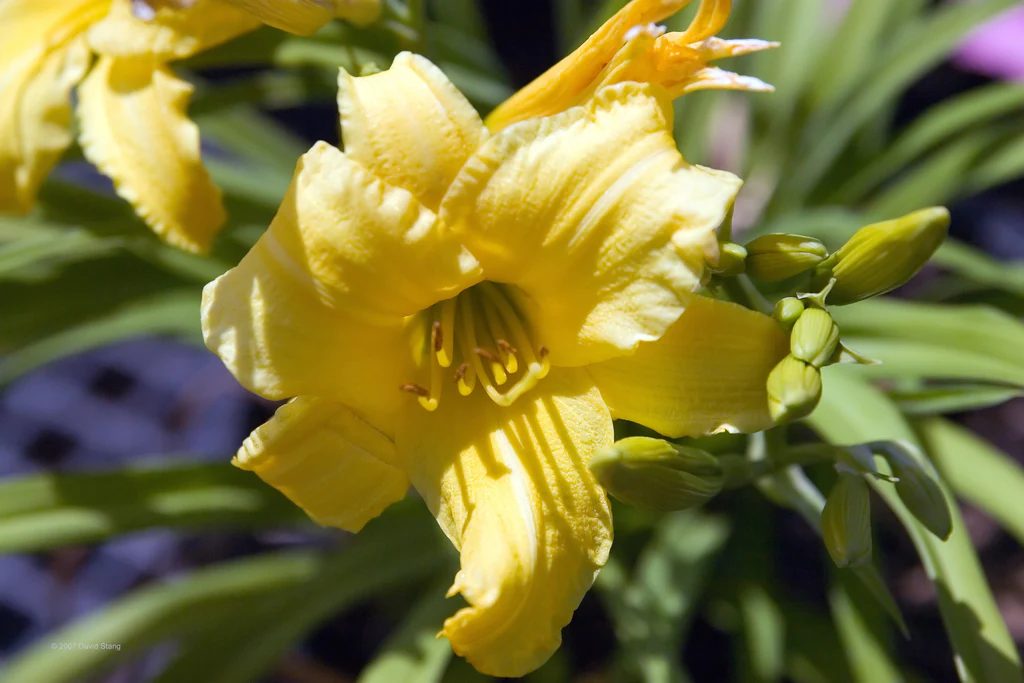
3. Plum Perfect
It looks gorgeous in its deep purple and dark pink shade with yellow in the middle.
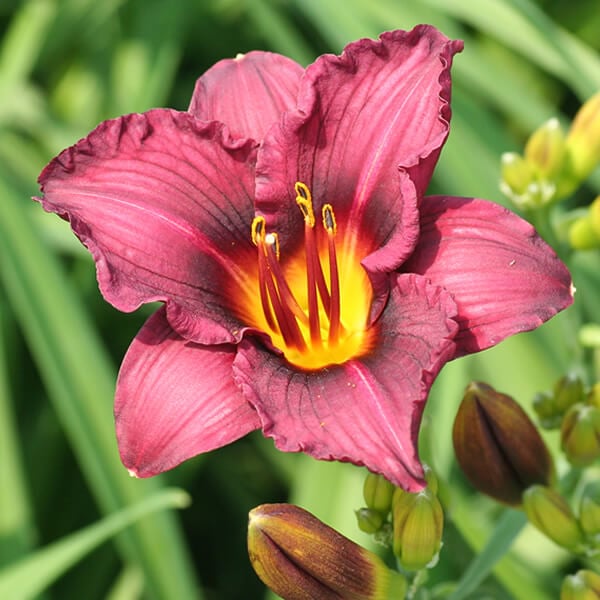
4. Raspberry Eclipse
It has a beautiful purple with yellow tints in the middle and corner of the petals.
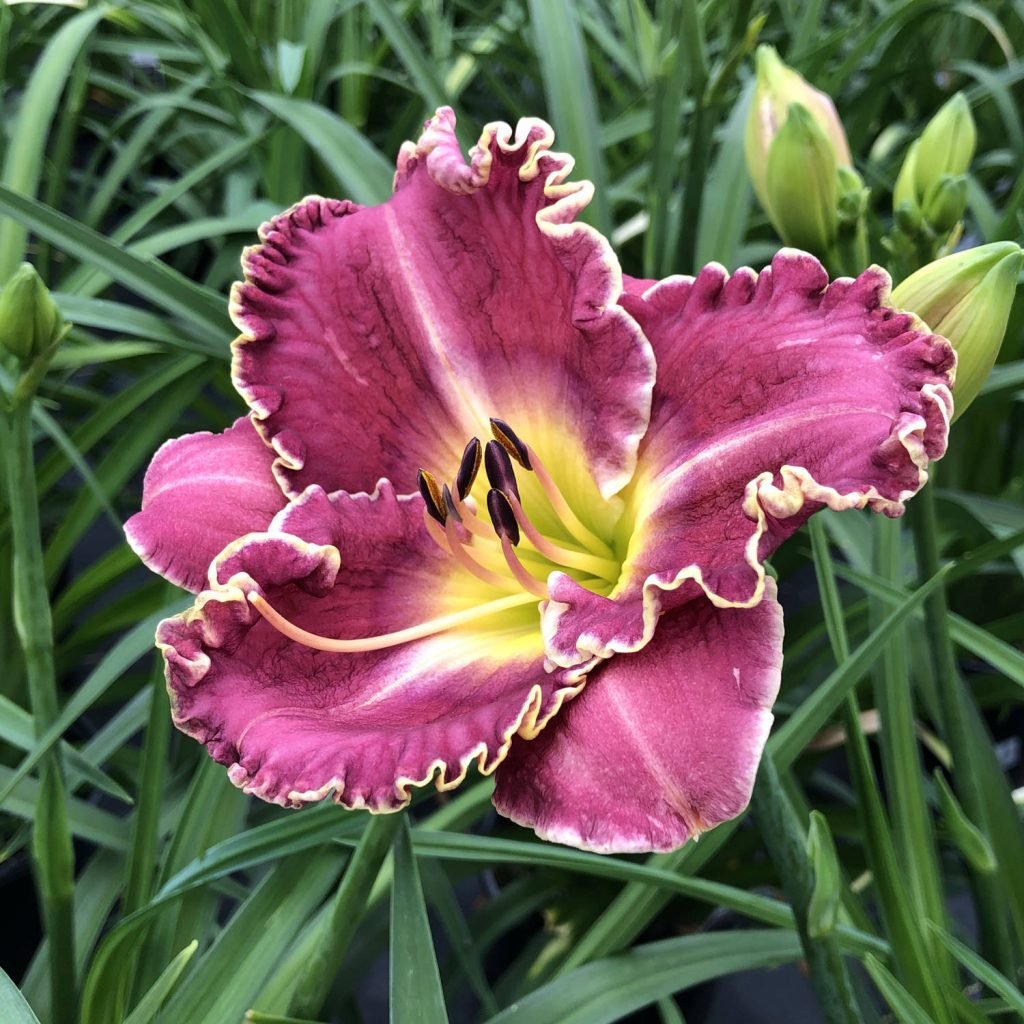
5. When My Sweetheart Returns
We can appreciate that whoever named it must have been very creative! It has a pinkish shade in the middle of the petals, and the rest is surrounded by a yellow shade.
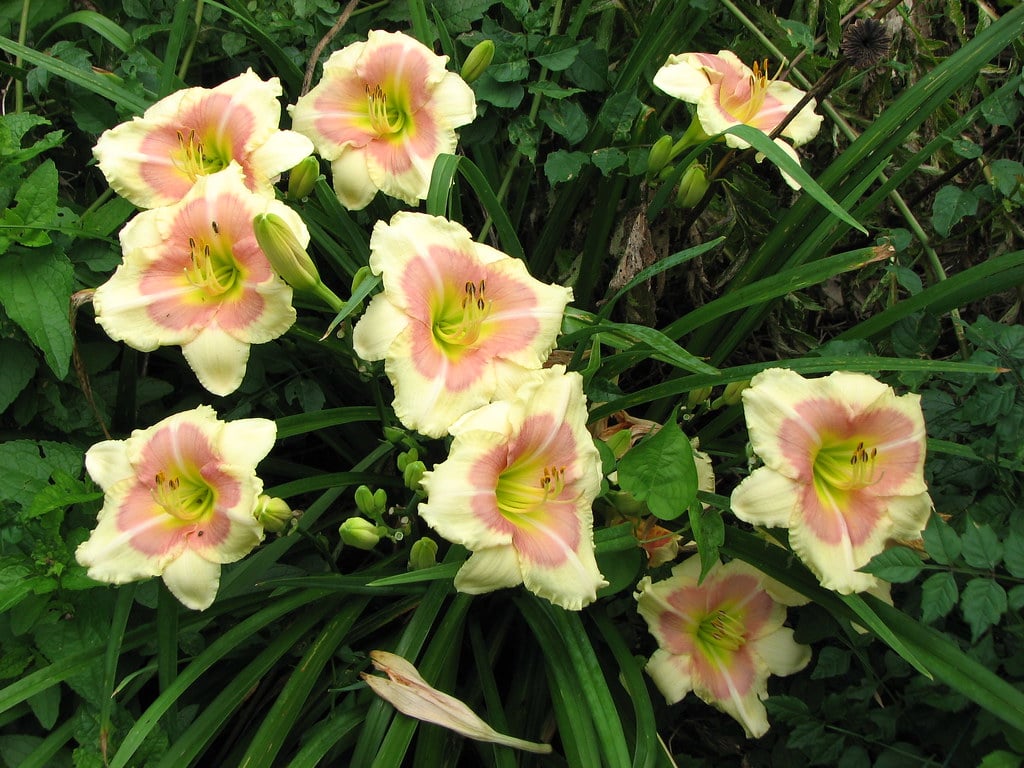
6. Moses Fire
It looks distinct because of its petals, and it has a fiery orange shade, with the edges of the petals having a yellow tint and outline.
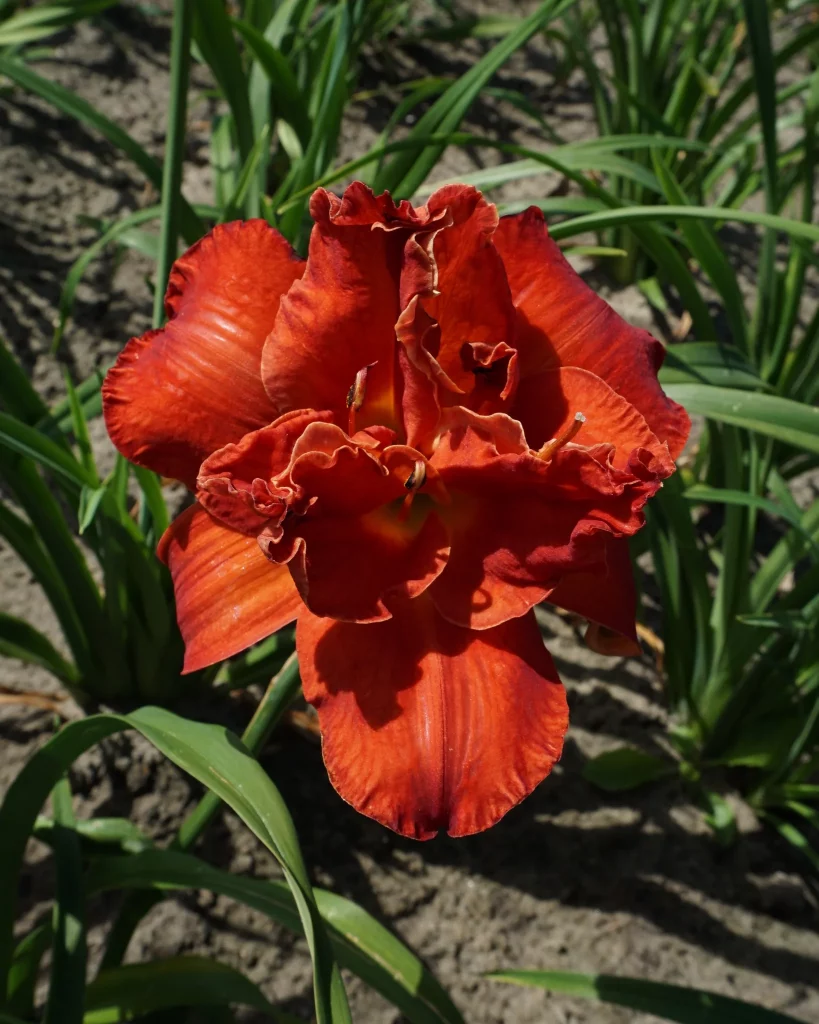
Characteristics of Daylilies
- Although the flowers last for a day, there are several flowers produced. The petals may be up to 20 cm across and look magnificent in their rich colours. They can come in different shapes, such as star, trumpet-shaped, wide, narrow, rounded, pointed, and have a smooth or rough appearance.
- They are usually cultivated as ornamental plants and in borders.
- They wilt every autumn but then bloom again in spring, and some might be evergreen, where they retain their leaves all around the year. However, they can grow in both shades or in full sun. For instance, if they are exposed to very hot summers, then the petals’ colour might be reduced.
Caution: If you have cats as your pets, you need to know that all parts of daylilies are toxic if they consume them by chance.
Conditions for Ideal Growth for Daylilies
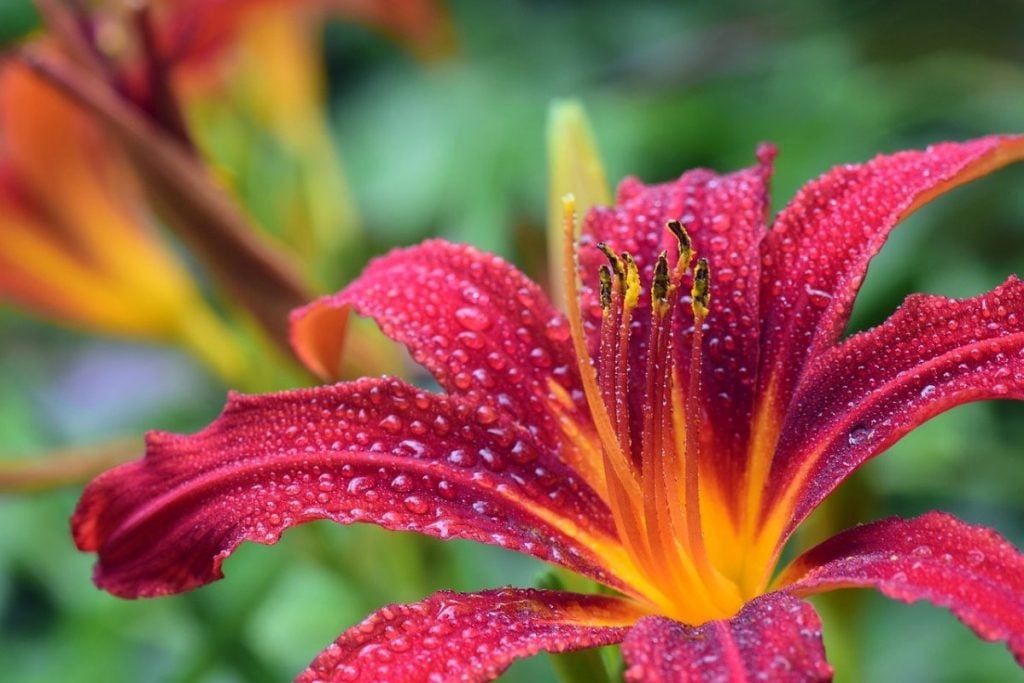
1. Sunlight
They grow best when they are exposed to full sun, but they can also manage if there is sub-optimal sun exposure also. However, if they grow in full sun, they are likely to produce better flowers, and they might flower less if grown in the shade. According to the Royal Horticultural Society UK, these plants are easy to grow and are hardy (they can survive in different weather conditions.
2. Soil
You need to plant them in well-drained soils for ideal growth, but they can even manage in heavy clay! They don’t grow well if the soil is waterlogged. In addition, they shouldn’t be grown near other plants because they will compete for nutrients and wouldn’t grow up healthy.
You can buy these plants in containers where they might have already been cultivated.
3. Planting
Toil the soil before planting and ensure that there is a good amount of fertilizers or compost in it. Create a hole in the ground wide enough to accommodate the roots without crowding them. After this, fill it in with soil lightly and water them well so that the soil sets.
4. Continued Care
Although they require very minimal care, it is best to take care of them so that they can thrive. You need to water them with around 1 inch of water weekly, as this is ideal since they grow well in moist soils. Incorporate pest control measures, although they can survive well without them and if you fertilize annually once, these plants might produce more flowers.
Why Should We Prune Daylilies?
When you trim or cut down some part of the plant, such as stem, flowers or branches, because they are overgrown, this is called pruning. This is done to help the plants grow even better. This pruning is done mainly for the following reasons:
- To control the growth of the plant, but this cannot be used if there are problems with how you have planted the plants (e.g., alignment issues)
- To improve plant health and aesthetics (removing dead flowers and diseased parts of the plant such as leaves can lead to better growth)
- Improve flower and fruit production
- Create special shapes and forms (e.g., this is commonly seen in hedges where they are grown and they are shaped in the forms of cubes or cuboids)
- Rejuvenate older plants, especially if the plants are overgrown or sparse
- For protection purposes where it is always best to cut weak or rotten branches or stems as they might pose a hazard to the environment.
Follow these two easy steps to perfect pruning!
Step 1: You can cut down the flowers that have wilted and stems that don’t have any buds on them. You can use your pruning shears to do this. This way, most of the nutrients will help in producing more flowers that can grow on stems with buds.
Step 2: In late fall or spring, you can cut down all the dead flowers and leaves, commonly called spent growth.
Tools Required to Prune Daylilies
- Pruning shears are used for small branches and twigs up to 3-4 cm.
- Lopping shears are used for branches between 4 to 5 cm.
- Pruning saws are used for large branches which are greater than 5 cm.
Deadheading Daylilies
This refers to the process of removing the dead or wilted flowers from your plants. This process also has benefits where it allows the plants and flowers to grow and maybe become thicker continuously. Once you have decided on a time to deadhead, finalise the cutting point for it. A thumb rule is that you can cut about 0.5 to 0.6 cm below the dead flower.
Summing Up
Daylilies are beautiful perennial plants that require minimal care. Although they can grow in any kind of soil, they might produce more flowers if grown in well-drained soils with good sun exposure. Don’t grow them along with other plants, as they will compete for nutrition. From thousands of varieties, you can choose the best one that you like!
Pruning refers to cutting different parts of the plant, such as leaves, stems or overgrown branches. Deadheading refers to removing the spent flowers. In daylilies, it is better to deadhead flowers because otherwise, they can grow into seeds and produce fewer flowers.
Before the next blooming season, pruning can be done. This way, you can create ideal situations for daylilies in your garden!
Frequently Asked Questions
Are Daylilies Difficult to Manage?
Absolutely not! In fact, they are one of the few flowering plants that require minimal care. They can grow in different kinds of soil, require minimal watering, can withstand many different climatic conditions, and require pruning and deadheading occasionally. There are about 35,000 beautiful varieties you can choose from as well!
How to Prune Daylilies?
First, you can cut down the flowers that have wilted and stems that don’t have any buds on them. You can use your pruning shears to do this. Then, in late fall or spring, you can cut down all the dead flowers and leaves, commonly called spent growth.
How to Deadhead Daylilies?
Remove the entire stalk of daylilies rather than letting it be because then there is a chance that they can develop seeds and will take in a lot of nutrients. You can use either a pair of shears or just put your thumb and forefinger just below the spent flower base and remove it.

